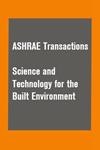如何通过深层建筑改造确保居住者的舒适度和满意度?丹麦案例研究的教训
IF 1.7
4区 工程技术
Q3 CONSTRUCTION & BUILDING TECHNOLOGY
Science and Technology for the Built Environment
Pub Date : 2023-03-27
DOI:10.1080/23744731.2023.2194196
引用次数: 0
摘要
如果欧盟要实现其雄心勃勃的气候目标,预计未来十年建筑改造的步伐将大幅加快。本研究探讨了当前改造工作的成功与挑战,重点关注室内环境质量和居住者对技术装置的满意度。在丹麦一个正在进行深度能源改造的社会住房区进行了一项调查、室内环境监测和半结构化访谈。改造大大改善了冬季的热舒适性和室内空气质量,这是居住者的一大满意来源。然而,过热被认为是夏季的一个重要问题。机械通风装置出现故障,造成不适,特别是干燥的空气、噪音和通风。乘客缺乏通风知识和手动控制,这导致他们中的一部分人通过阻塞扩散器或断开装置等替代方式来缓解不适。为了避免与此类行为相关的风险,新的改造工作应特别注意技术装置的用户友好性,向居民明确传达技术信息,并在入住后密切监测装置的性能和居住者的满意度。本文章由计算机程序翻译,如有差异,请以英文原文为准。
How to ensure occupant comfort and satisfaction through deep building retrofit? Lessons from a Danish case study
The pace of building retrofit is expected to increase significantly in the coming decade if the European Union is to meet its ambitious climate targets. This study explores successes and challenges with current retrofit efforts, with focus on indoor environmental quality and occupants’ satisfaction with the technical installations. A survey, indoor environmental monitoring and semi-structured interviews were carried out in a Danish social housing area undergoing a deep energy retrofit. The retrofit considerably improved winter thermal comfort and indoor air quality, which was a great source of satisfaction for the occupants. Overheating was however identified as an important concern in summer. The mechanical ventilation units suffered from faults which caused discomfort, in particular dry air, noise and draft. Occupants lacked knowledge on ventilation and manual control over it, which led a share of them to mitigate discomfort in alternative ways, by obstructing diffusers or disconnecting the units. To avoid the risks linked to such behaviors, new retrofit efforts should pay particular attention to user-friendliness of technical installations, clear communication of technical information to the residents and a close monitoring of the installations’ performance and occupants’ satisfaction after move-in.
求助全文
通过发布文献求助,成功后即可免费获取论文全文。
去求助
来源期刊

Science and Technology for the Built Environment
THERMODYNAMICSCONSTRUCTION & BUILDING TECH-CONSTRUCTION & BUILDING TECHNOLOGY
CiteScore
4.30
自引率
5.30%
发文量
78
期刊介绍:
Science and Technology for the Built Environment (formerly HVAC&R Research) is ASHRAE’s archival research publication, offering comprehensive reporting of original research in science and technology related to the stationary and mobile built environment, including indoor environmental quality, thermodynamic and energy system dynamics, materials properties, refrigerants, renewable and traditional energy systems and related processes and concepts, integrated built environmental system design approaches and tools, simulation approaches and algorithms, building enclosure assemblies, and systems for minimizing and regulating space heating and cooling modes. The journal features review articles that critically assess existing literature and point out future research directions.
 求助内容:
求助内容: 应助结果提醒方式:
应助结果提醒方式:


